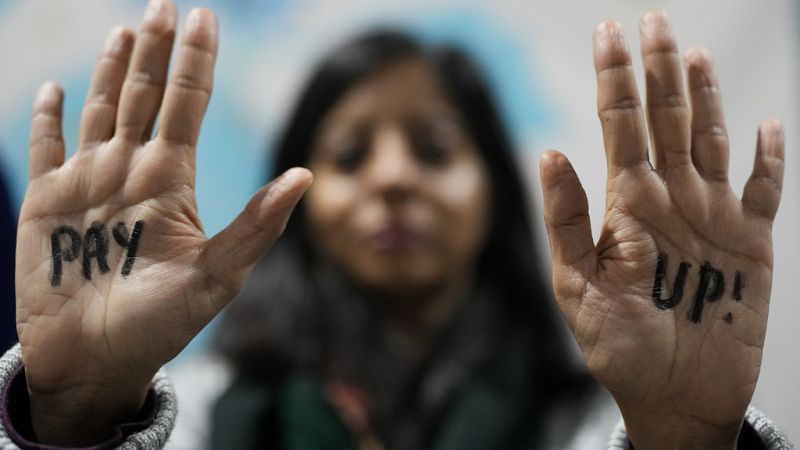Done deal: What to expect from the funding deal agreed at UN climate talks

Early on Sunday morning, a lengthy applause followed COP29 President Mukhtar Babayev's declaration that a deal had been reached on how rich countries can financially support poorer countries in their battle against climate change.
The standing ovation masked what had often been a fractious affair almost throughout the negotiations that had preceded it, with the talks coming perilously close to a collapse after developing countries walked out of the talks on Saturday, temporarily suspending negotiations.
Almost immediately, the $300bn amount was criticised as "paltry" by a delegate from India, a sentiment shared by many who were present at the talks, particularly representatives of developing countries who had been asking for a far greater amount - $1.3trn.
World Resources Institute president and CEO Ani Dasgupta said the final amount was “an important down payment toward a safer, more equitable future,” but conceded that the poorest and most vulnerable nations are “rightfully disappointed that wealthier countries didn’t put more money on the table when billions of people’s lives are at stake.”
Now, attention will have to shift to how the final text of the COP29 agreement will be implemented in practice, as well as how other stakeholders can assist in bridging the gap in funding the battle against climate change.
Who can help bridge the climate financing gap?
The COP29 text included a line that asked all parties to cooperate by using "all public and private sources" to get closer to the $1.3trn.
This is, in effect, a call to multilateral banks, as well as the private sector with its vast resources, to chip in and help bridge the gap in climate finance that governments are either unable or unwilling to fill on their own.
Much will be expected from multilateral banks, which are ultimately government-backed as they are funded by taxpayer money from their member countries. They are currently the biggest and fastest-growing source of climate finance for the developing world.
Also referred to as multilateral development banks (MDB), these institutions are tied to mandates which require them to provide development assistance - at a low rate compared to private banks - of various types to regions that need it. Examples would include financing a much-needed railway line to facilitate economic growth in a certain region, or providing a loan for the construction of a renewable energy project.
The largest among them is the World Bank, with regional examples including the Manila-headquartered Asian Development Bank and the Adbidjan-based African Development Bank (AfDB).
Such institutions were a big reason why in 2022 the world met a goal countries had set in 2009 to supply developing nations with $100bn annually to address climate change. In fact, climate finance provided by these banks for developing countries more than tripled between 2013 to 2022, reaching $47bn in that year alone, according to the OECD Creditor Reporting System.
Moving forward, however, MDBs will need a great deal of assistance if climate financing goals are to be met.
The underlying hope in the COP29 text's call for "private sources" to help bridge the financing gap will require private investors, such as private commercial banks, to step up their game in order to get closer to the $1.3trn goal.
In 2022, private investors were responsible for $22bn in climate financing, significantly less than the $41bn provided by foreign governments.
Where will the money go?
The agreement reached over the weekend replaces the one made 15 years ago, which had charged rich countries $100bn per year in climate finance to the developing world.
This year's deal has similar goals and looks to assist poorer countries to prepare for a warming world and stop it from getting hotter. This will include paying for the transition from fossil fuels to clean energy, as well as building up the infrastructure needed to install technologies such as wind and solar energy at scale.
Additionally, areas that are hit hard by extreme weather will require money to adapt and prepare for events like floods, typhoons and fires. Farming practices will also need to become more resilient to weather extremes, as will the construction of new houses.
Today

